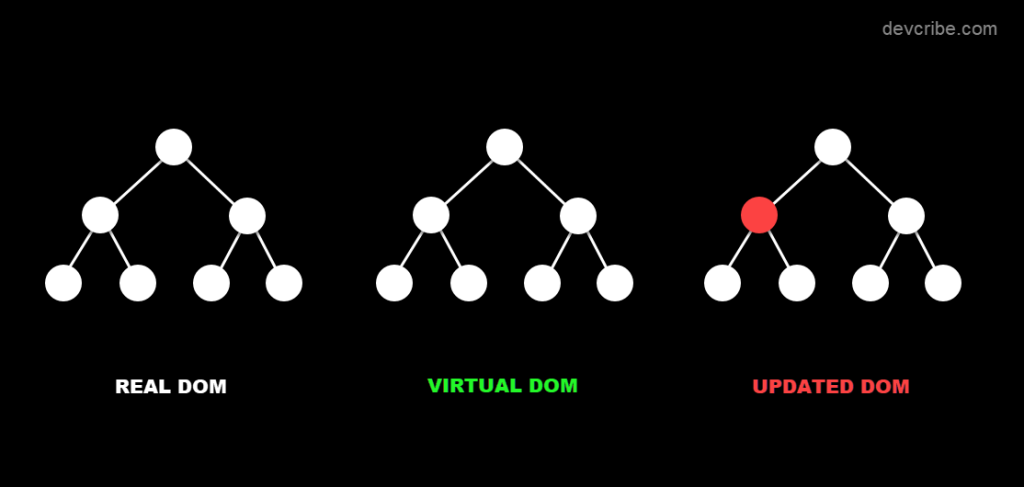Address
304 North Cardinal St.
Dorchester Center, MA 02124
Work Hours
Monday to Friday: 7AM - 7PM
Weekend: 10AM - 5PM
To understand the concept of Virtual DOM in ReactJS. First, you need to understand what is a DOM, which is an important part of web development.

The Document Object Model (DOM) is a web API (Application Programming Interface) that provides a programming interface for web documents. It represents the page so that programs can change the document structure, style, and content.
The Document Object Model (DOM) represents the hierarchical structure of the document as nodes and objects as you can see in the figure below, it shows each element as a node. That way, programming languages can interact with the page user interface. such as adding or removing HTML elements, changing their attributes, and modifying their content. You can also respond to user events, such as clicks and keystrokes, by changing the appearance or behavior of the page

It is the same as DOM as we mentioned in the above section, but the only difference why it is called Virtual DOM is when a user interacts with the web app, then frameworks, and libraries like React, Vue, and Angular update a Virtual DOM in memory. which is a copy of the Real DOM.
When there are any changes occur within the page, another updated Virtual DOM created which displays the changes on that page. So now we have 3 DOMs:
which will help to make fewer renderings in the fastest time. which we will discuss in further content.




It provides a lot of benefits such as:
The Virtual DOM is a simplified and faster version of the actual structure of a web page. It is a way for modern JavaScript libraries and frameworks like React to update and manipulate a web page in memory, before making changes to the actual HTML elements that are displayed in the browser. This helps to improve the performance and responsiveness of web applications, as it reduces the amount of time and resources required to make updates to the actual web page.
I hope this content will be enough to understand what is a Virtual DOM and how it works. If your want to learn more about ReactJS, you can follow all the ReactJS tutorials starting from “Introduction to React” on devcribe.com. Happy Coding!